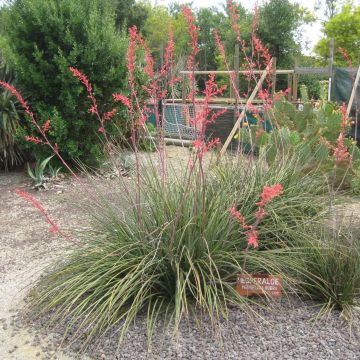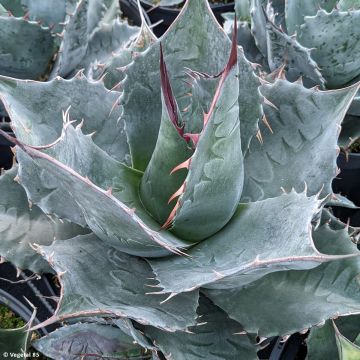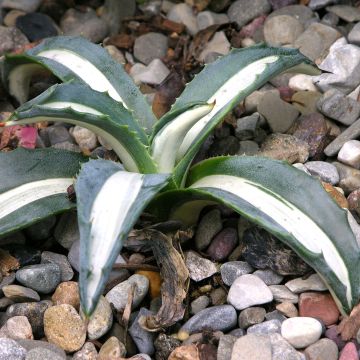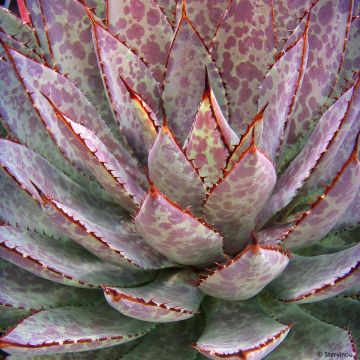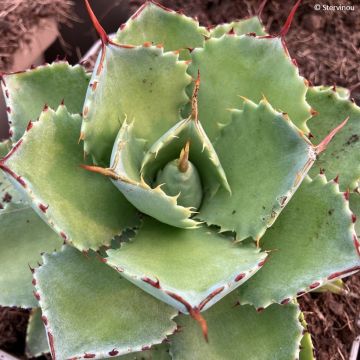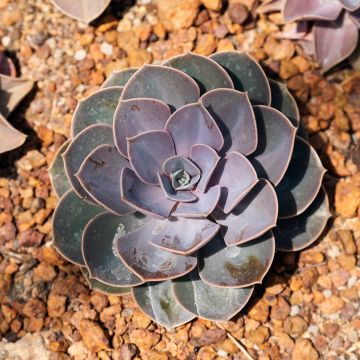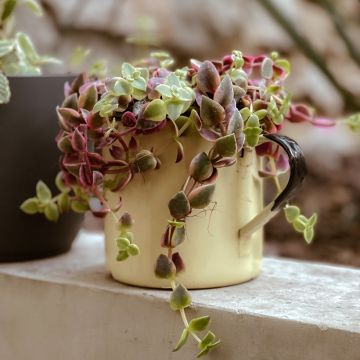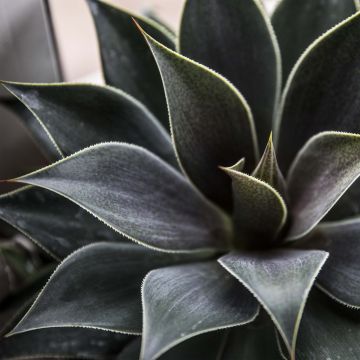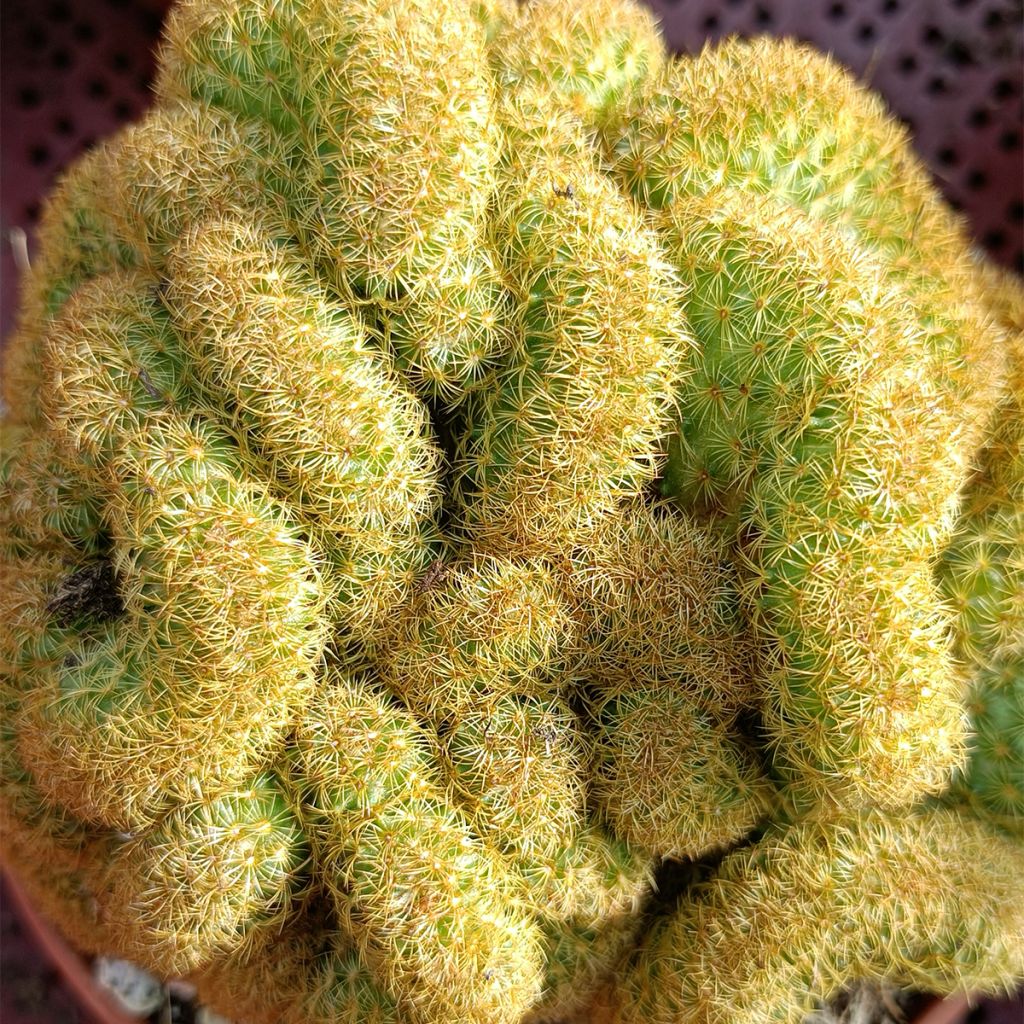

Mammillaria elongata Cristata
Mammillaria elongata Cristata
Mammillaria elongata Cristata
Brain Cactus, Golden star Cactus, Ladyfinger Cactus
This item cannot be shipped to the selected country
Delivery charge from €5.90
More information
Schedule delivery date,
and select date in basket
This plant carries a 12 months recovery warranty
More information
We guarantee the quality of our plants for a full growing cycle, and will replace at our expense any plant that fails to recover under normal climatic and planting conditions.
From €5.90 for pickup delivery and €6.90 for home delivery
Express home delivery from €8.90.
Does this plant fit my garden?
Set up your Plantfit profile →
Description
Mammillaria elongata 'Cristata' is commonly called brain cactus due to its erect and creeping crested stems, tightly packed together in a convoluted mass. Short and crossing yellow radial prickers adorn its tough green epidermis in a dense, almost golden lace. Very resistant to heat and drought, it is a slow-growing plant that prefers full sun in well-drained, rocky to sandy and dry soil. Eventually, it forms a curious ground cover for rock gardens and banks in hot regions. Elsewhere, overwinter it in a bright, frost-free room.
Mammillaria elongata 'Cristata' or Mammillaria elongata f. cristata is a crested form of the elongated mammillaria or golden mammillaria that belongs to the immense family of cacti. Mammillaria elongata is a succulent perennial native to central Mexico where it forms ground covers over 1m (3ft) in size with its rapid growth and self-rooting stems. It grows in dense clumps of short, thick stems. Their golden appearance comes from their dense covering of short, yellow prickles, turned inward and gathered in radial clusters around pale-yellow to brown areoles. It is resistant to drought but does not survive the negative temperatures of our winters. Cultivate it in a pot outside hot regions, in full sun or partial shade in a very well-drained substrate made of a mixture of soil, sand, and gravel. Avoid overly humid environments or excessive watering.
Its crested form corresponds to an anomaly in the organisation of the cells responsible for its growth. Instead of forming regular cylindrical stems, the cactus stems will grow in width, forming sinuous and intertwined crests. Mammillaria elongata 'Cristata' has much slower growth than the species, forming a spreading clump only 15cm (6in) tall and 30cm (12in) wide. It forms several stems that are 3cm (1in) thick and 10cm (4in) wide, with a tough epidermis of medium green. Its surface is punctuated with pale-yellow to brown areoles, which gather short prickles, 1cm (0.4in) long, curved inward, organised in a circle and equipped with white hair in their youth. This plant blooms in May-June, producing a crown around the top of the stems. The small flowers measure 1cm (0.4in). They are white to pale-yellow or pink, and last up to two months. They sometimes bloom again later in the year. They are followed by tiny, elongated bright red fruits.
In warm regions, Mammillaria elongata 'Cristata' will find its place in a dry and sunny rockery or on a wild bank. Elsewhere, it can be planted in a pot that can be stored away at the arrival of the first cold weather. In containers, stop watering until the vegetation resumes in spring. It can be paired with other cacti such as echinocactus, ferocactus, and astrophytums to create miniature dry gardens or placed in a large pot to decorate a corner of a conservatory or a windowsill.
Report an error about the product description
Mammillaria elongata Cristata in pictures
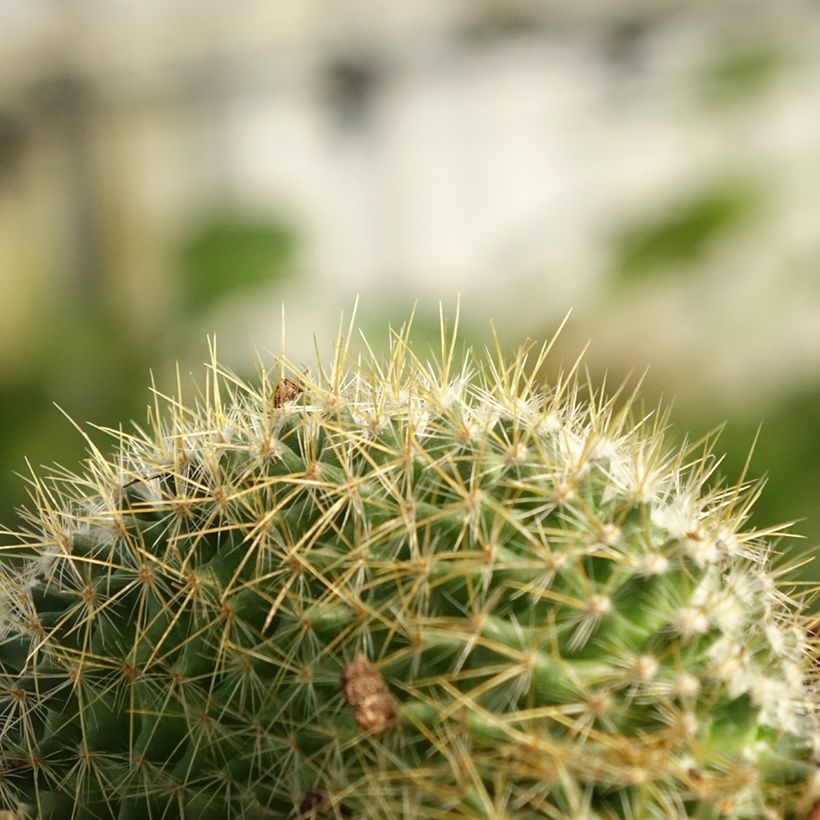

Flowering
Foliage
Plant habit
Botanical data
Mammillaria
elongata
Cristata
Cactaceae
Brain Cactus, Golden star Cactus, Ladyfinger Cactus
North America
Other Cacti and succulents
Planting and care
Plant Mammillaria elongata 'Cristata' in full sun in light, well-draining, mineral-rich, sandy to rocky soil. It does not tolerate temperatures below 0°C (32°F). Very heat and drought resistant, it can be grown outdoors in warm climates with dry summers. Elsewhere, cultivate it in a pot with a cactus substrate. Keep the potted substrate dry throughout winter in a bright room between 5 and 10°C (41 and 50°F). Outdoors, protect it from excessive rain which will cause it to rot. Excessive moisture in winter can also greatly reduce the hardiness of this plant. Water sparingly from March to October.
Planting period
Intended location
Care
This item has not been reviewed yet - be the first to leave a review about it.
Haven't found what you were looking for?
Hardiness is the lowest winter temperature a plant can endure without suffering serious damage or even dying. However, hardiness is affected by location (a sheltered area, such as a patio), protection (winter cover) and soil type (hardiness is improved by well-drained soil).

Photo Sharing Terms & Conditions
In order to encourage gardeners to interact and share their experiences, Promesse de fleurs offers various media enabling content to be uploaded onto its Site - in particular via the ‘Photo sharing’ module.
The User agrees to refrain from:
- Posting any content that is illegal, prejudicial, insulting, racist, inciteful to hatred, revisionist, contrary to public decency, that infringes on privacy or on the privacy rights of third parties, in particular the publicity rights of persons and goods, intellectual property rights, or the right to privacy.
- Submitting content on behalf of a third party;
- Impersonate the identity of a third party and/or publish any personal information about a third party;
In general, the User undertakes to refrain from any unethical behaviour.
All Content (in particular text, comments, files, images, photos, videos, creative works, etc.), which may be subject to property or intellectual property rights, image or other private rights, shall remain the property of the User, subject to the limited rights granted by the terms of the licence granted by Promesse de fleurs as stated below. Users are at liberty to publish or not to publish such Content on the Site, notably via the ‘Photo Sharing’ facility, and accept that this Content shall be made public and freely accessible, notably on the Internet.
Users further acknowledge, undertake to have ,and guarantee that they hold all necessary rights and permissions to publish such material on the Site, in particular with regard to the legislation in force pertaining to any privacy, property, intellectual property, image, or contractual rights, or rights of any other nature. By publishing such Content on the Site, Users acknowledge accepting full liability as publishers of the Content within the meaning of the law, and grant Promesse de fleurs, free of charge, an inclusive, worldwide licence for the said Content for the entire duration of its publication, including all reproduction, representation, up/downloading, displaying, performing, transmission, and storage rights.
Users also grant permission for their name to be linked to the Content and accept that this link may not always be made available.
By engaging in posting material, Users consent to their Content becoming automatically accessible on the Internet, in particular on other sites and/or blogs and/or web pages of the Promesse de fleurs site, including in particular social pages and the Promesse de fleurs catalogue.
Users may secure the removal of entrusted content free of charge by issuing a simple request via our contact form.
The flowering period indicated on our website applies to countries and regions located in USDA zone 8 (France, the United Kingdom, Ireland, the Netherlands, etc.)
It will vary according to where you live:
- In zones 9 to 10 (Italy, Spain, Greece, etc.), flowering will occur about 2 to 4 weeks earlier.
- In zones 6 to 7 (Germany, Poland, Slovenia, and lower mountainous regions), flowering will be delayed by 2 to 3 weeks.
- In zone 5 (Central Europe, Scandinavia), blooming will be delayed by 3 to 5 weeks.
In temperate climates, pruning of spring-flowering shrubs (forsythia, spireas, etc.) should be done just after flowering.
Pruning of summer-flowering shrubs (Indian Lilac, Perovskia, etc.) can be done in winter or spring.
In cold regions as well as with frost-sensitive plants, avoid pruning too early when severe frosts may still occur.
The planting period indicated on our website applies to countries and regions located in USDA zone 8 (France, United Kingdom, Ireland, Netherlands).
It will vary according to where you live:
- In Mediterranean zones (Marseille, Madrid, Milan, etc.), autumn and winter are the best planting periods.
- In continental zones (Strasbourg, Munich, Vienna, etc.), delay planting by 2 to 3 weeks in spring and bring it forward by 2 to 4 weeks in autumn.
- In mountainous regions (the Alps, Pyrenees, Carpathians, etc.), it is best to plant in late spring (May-June) or late summer (August-September).
The harvesting period indicated on our website applies to countries and regions in USDA zone 8 (France, England, Ireland, the Netherlands).
In colder areas (Scandinavia, Poland, Austria...) fruit and vegetable harvests are likely to be delayed by 3-4 weeks.
In warmer areas (Italy, Spain, Greece, etc.), harvesting will probably take place earlier, depending on weather conditions.
The sowing periods indicated on our website apply to countries and regions within USDA Zone 8 (France, UK, Ireland, Netherlands).
In colder areas (Scandinavia, Poland, Austria...), delay any outdoor sowing by 3-4 weeks, or sow under glass.
In warmer climes (Italy, Spain, Greece, etc.), bring outdoor sowing forward by a few weeks.

































